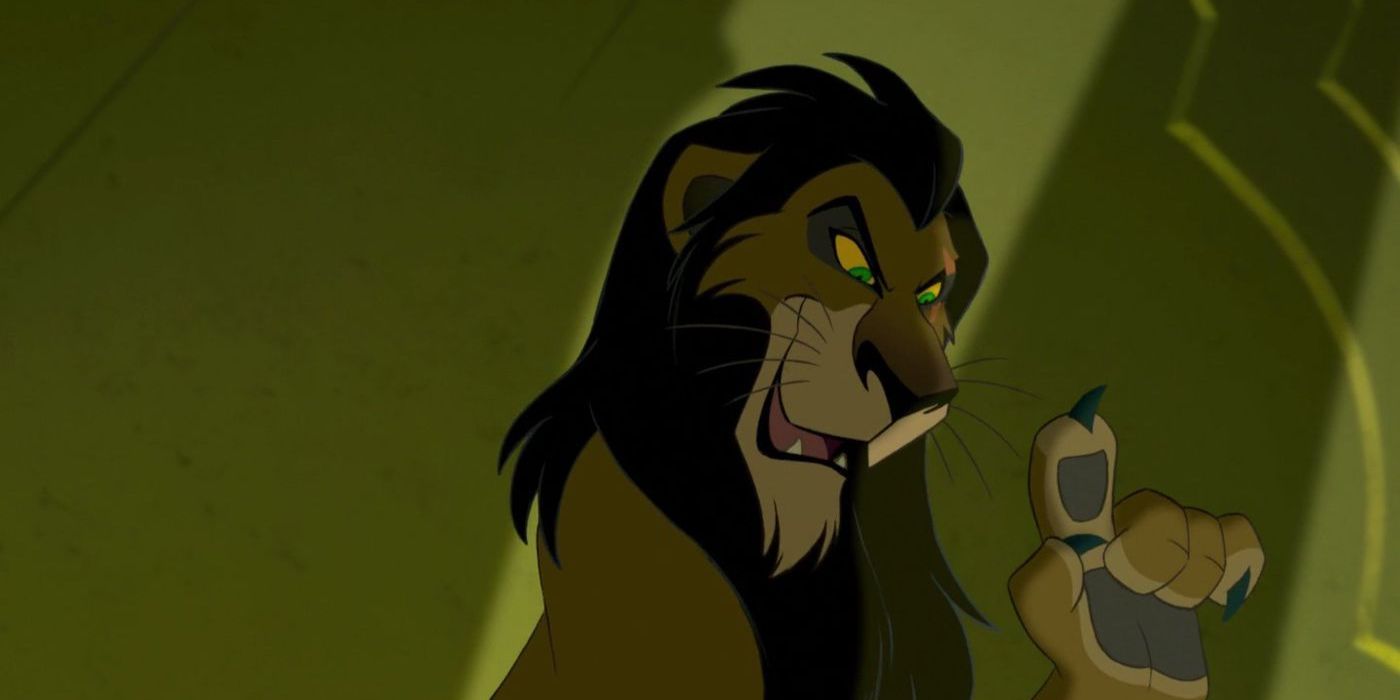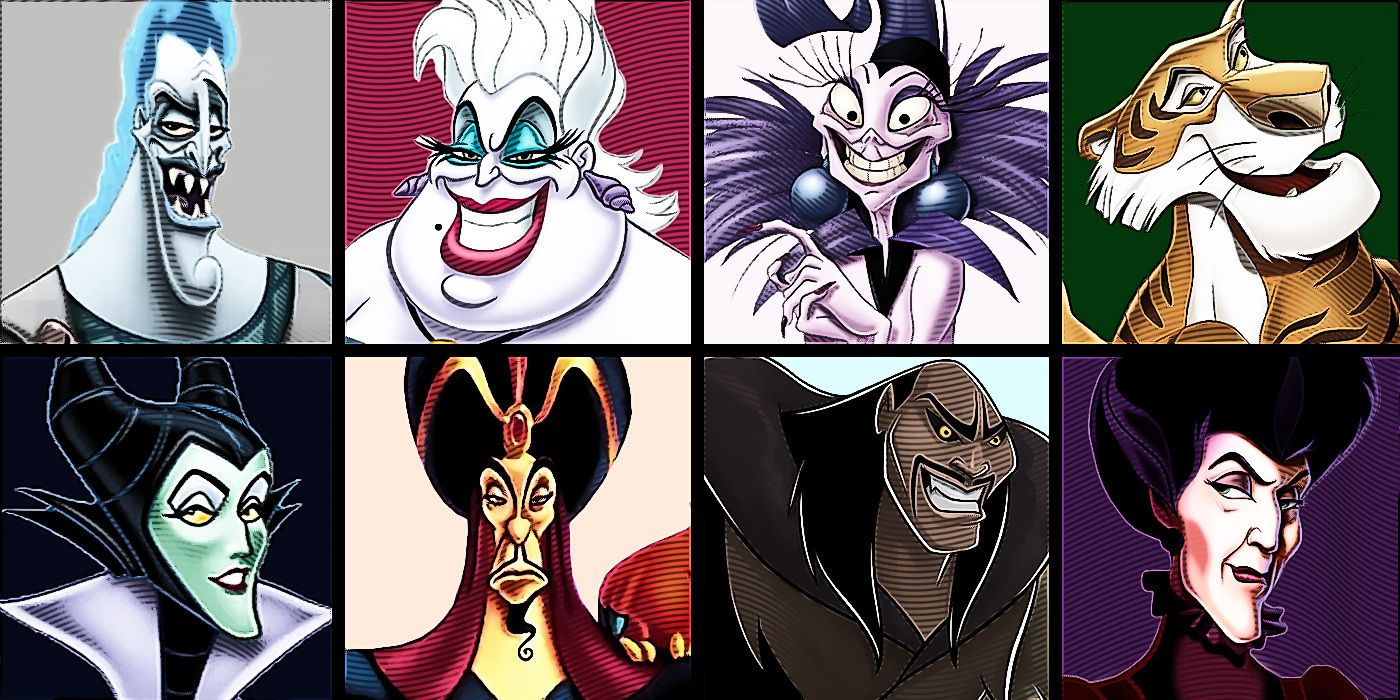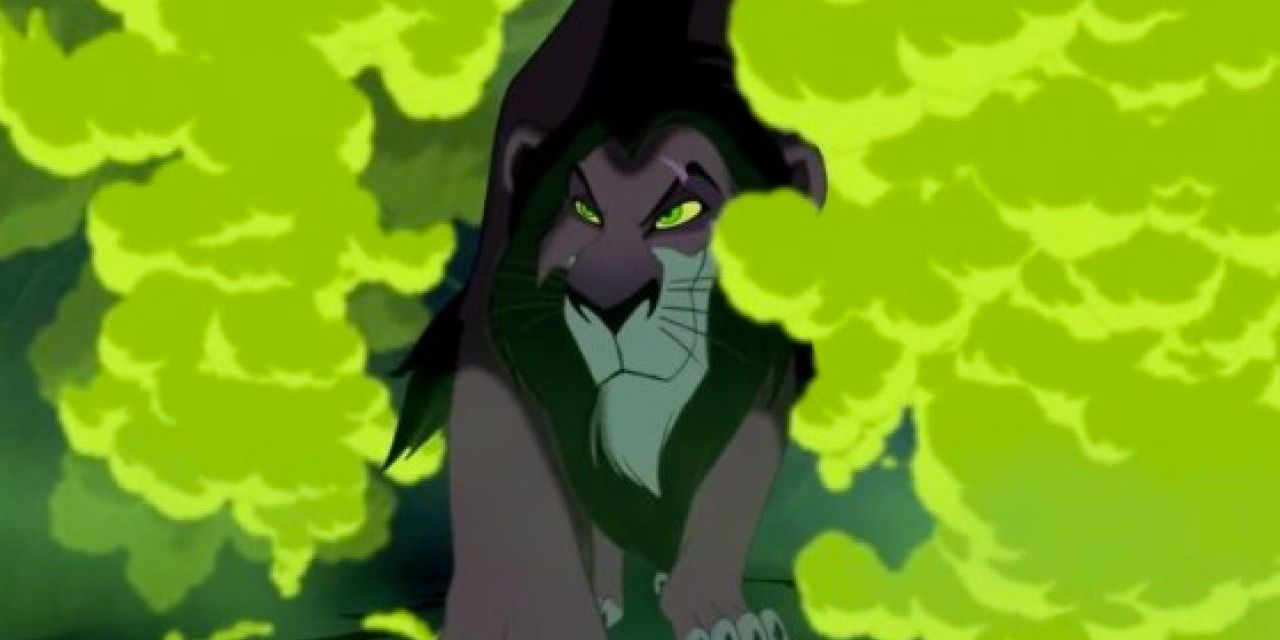The Big Picture
- The animated Disney movies of today no longer prioritize strong and memorable villains, instead focusing on internal and thematic conflicts.
- The absence of iconic Disney villains like Scar, Gaston, Jafar, Ursula, and Frollo has left a void in recent animated films.
- Disney's shift towards more compassionate and nuanced villains may be interesting, but there is still value in having charismatic and unequivocally evil antagonists.
At almost 30 years old, The Lion King is old enough to feel guilt over the death of its father, run away, accept its destiny, and rule Pride Rock. The film remains a classic, undiminished by time, and rightfully remains one of the biggest hits of Disney Animation’s Second Golden Age. While the “live-action” adaptation was a soulless retread of the animated film, the original has lost none of its punch, especially when it comes to its antagonist, Scar (Jeremy Irons). In addition to the success of this Second Golden Age, you can see that part of the success of these movies was by the memorable bad guys, who were not only delectably evil, but also, in an age of Disney musicals, got terrific numbers.
Today, the animated Disney movies are a different story. We no longer have strong antagonists who may be arguably one-dimensional but remain memorable due to the bravado of the character and the brassiness of their musical number. For the past decade, ever since the last great Disney villain, Dr. Facilier (Keith David) from The Princess and the Frog, and his terrific number “Friends on the Other Side," Disney has pivoted to making villains more of an afterthought. The villainy now tends to be internal and thematic rather than some power-hungry outsider looking to get what he or she wants. Some may say that’s an evolution, but something has been lost here.
Where Have All the Iconic Disney Villains Gone?
Arguably, we’re in our third Golden Age with a string of hits dating back to Tangled. But these new movies don’t really value their antagonists. The last out-and-out bad guy was Tangled’s Mother Gothel (Donna Murphy), but she’s nowhere near your top-tier baddies like Scar, Gaston, Jafar, Ursula, and Frollo. Her song, “Mother Knows Best" is forgettable, and you can see that they’re trying to split the difference between a realistic bad guy—a passive-aggressive parent figure who demeans their child—and someone delectably evil, and so she ends up in this weird middle ground rather than leaving an impression.
The following animated Disney movies have largely done away with villains, or made them no longer central to the story. Wreck-It Ralph has King Candy/Turbo (Alan Tudyk), but his villainy, while central to the plot, doesn’t really factor into the real conflict of the movie, which is Ralph wrestling with whether he’s the bad guy. Frozen has Prince Hans (Santino Fontana), but the film chooses to leave his villainy as a twist rather than letting you know he’s evil, and the climax of the film doesn’t really rest on defeating him. Big Hero 6 has Callaghan (James Cromwell), but rather than a delectable villain, he shows the theme of how grief can wear away at a person’s morality. Zootopia has Bellwether (Jenny Slate), but again, it’s a twist and once again is more about the themes of the film relating to the protagonist rather than a central bad guy. By the time we’ve arrived at Moana and Ralph Breaks the Internet, villains don’t really exist, and it’s the characters facing off against inner turmoil rather than a nefarious fiend.
It seems like Disney is no longer really comfortable having villains who are just bad for the sake of being bad, and on the one hand, it’s oddly compassionate. There’s a lesson that “villains” also have humanity, and you can see in the live-action versions of Beauty and the Beast and Aladdin, they’ve tried to reverse-engineer the story so that Gaston (Luke Evans) loves the violence of war and Jafar (Marwan Kenzari) has an inferiority complex, but this is the kind of shading that, in addition to being poorly executed in these live-action features, was never really necessary. Jafar has a lust for power, and that’s honestly good enough. Gaston, in addition to having a great song, represents what society values—physical strength and charisma—so his character gets to be an indictment on the townsfolk and a world that would never accept the Beast, thus further highlighting Belle’s kindness and bravery.
Scar Is a Sign of Disney Animated Films (Seemingly) Past
And as for Scar, the live-action version would've done well to take a page from the animated version and show that he just lusts after power. It’s Hamlet, and no one needs an explanation of why Claudius kills Hamlet’s father. Sometimes backstory is unnecessary, providing exposition without suitable explanation. What makes Scar interesting isn’t his backstory, but his personality and his actions. His motivation may be direct and simple, but what 1994’s The Lion King does with it makes him charismatic and monomaniacal, and through his actions, the larger themes of the movie solidify.
Scar wants to be king, but he doesn’t know what ruling is about. It’s just a prize to be won, and once he has it, Pride Rock goes to hell. He upsets the delicate balance by letting the hyenas run rampant, which devastates the food supplies. Like Simba as a child, Scar thinks ruling is just about getting to do what you want, and the movie shows the consequences of that behavior. Sure, he’s evil, but his actions have specificity to the larger narrative. We can see why Mufasa (James Earl Jones) was a good ruler and what Simba needs to understand about the burden of responsibility. Once you make Scar a joy to watch (casting Irons was one of the best moves Disney Animation ever made), then the audience is hooked.
The conventional wisdom is that you need a villain who is relatable, but I would counter that you need a villain who is interesting. Not everyone needs to have some deep-seated trauma that makes them tragic and empathetic. I don’t know if Disney will ever return to this kind of villain in their animated features, but they would do well to consider it. You don’t have to lose theme or character development just because the antagonist is unquestionably evil. You just have to make them charismatic and compelling. And a song on the level of “Be Prepared” doesn’t hurt either.



